The Bahías – La Ventańa and El Sargento
We drove from La Paz to two small fishing villages, La Ventańa and El Sargento, barely two streets wide, each busy with kitesurfing, big game fishing (marline, swordfish, dorado, sailfish and tuna) and remarkable off grid housing in the stark desert.
At El Sargento, the pavement ends, replaced with a isolated, rough, dusty, stark road to stunning Agua Caliente beach set against a backdrop of sandy mountains.
Beyond the beach, “No Name Road” was too much of a challenge. We turned around, leaving it to the 4-wheelers to make it to the natural hot water beach. (Dig in the sand…and the water is muy caliente!)

El Sargento , end of pavement – but still the main road 
The road leads to Agua Caliente Beach and a natural hot springs. 
The road is nestled between the beach and the mountains


Beautiful house, natural desert landscape
Picturesque gringo housing at El Sargento – cool houses on a stark desert.


Scorpion Gate
Playa Central and Joe’s Bar, kite-surfers hangouts.

Joe’s Bar 
l

Playa Central 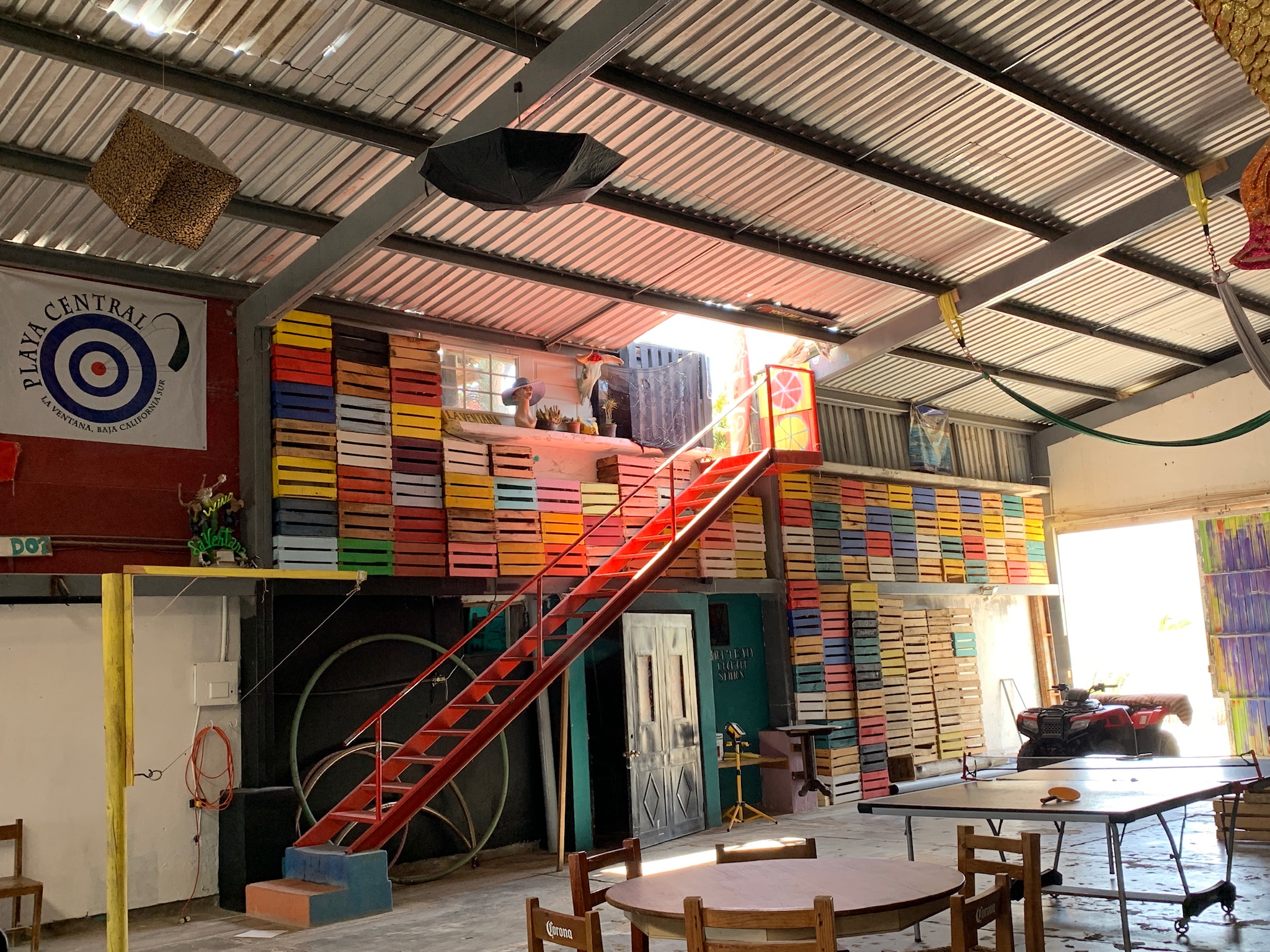
Playa Central 
Playa Central
Bahía de los Sueños (Bay of Dreams)
The bay’s original name was Bahía de los Muertos (Bay of the Dead). The (now-defunct) development company thought the name off-putting so renamed it. The locals still use the original name.
At one time, the dreams were big at the Bay of Dreams. The master planned community built a golf course, equestrian center, tennis courts, but most of the facilities are closed and for sale.
Stunning views overlooking a pristine snorkeling area and the Sea of Cortez.

All that remains of the “big dreams” 
Lunch spot 
Prime fishing, pristine beach 
El Triunfo (“thre UN fo”)
El Triunfo is 45 minutes south of La Paz in the foothills of the Sierra de la Laguna mountains. Once the largest and richest town in Baja California Sur, it became a ghost town when the silver mines closed in 1926.
Worth a trip to see the well-curated Museo Ruta de Plata (Museum of the Silver Route), the brainchild of Christy Walton (Sam’s daughter).

Ruto de Playa Museo (Silver Mine Museum) 

Mining ruins
El Triunfo is now a big weekend hangout due to a couple of chic restaurants, a few nicely restored buildings in this tiny dusty town.


Mission 

Renovations 
For sale or rent
Museu del la Música
In its glory days El Triunfo was a cultural center and musical instruments were shipped from all over the world, but ultimately abandoned. The museum has fallen into disrepair.
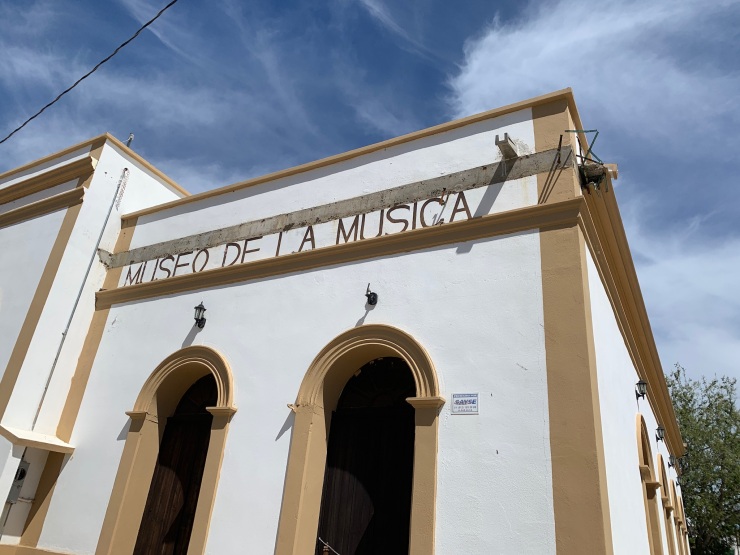

1897 Steinway 
1897 Steinway 
Always an accordian 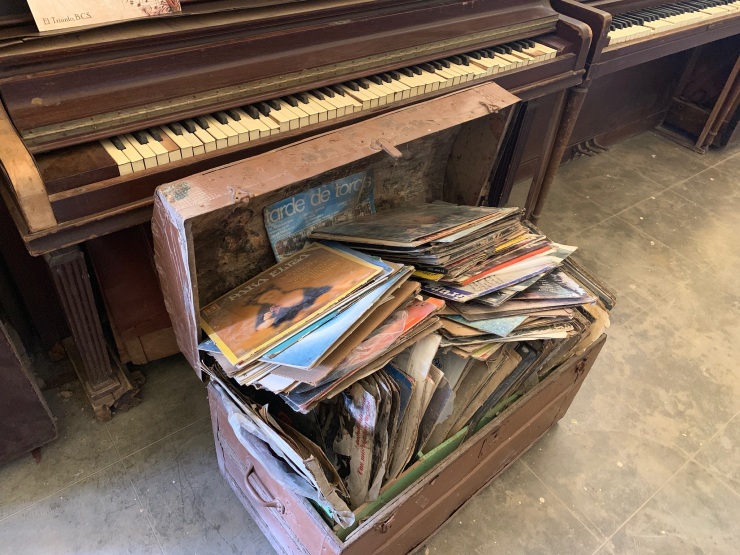
The Music Box 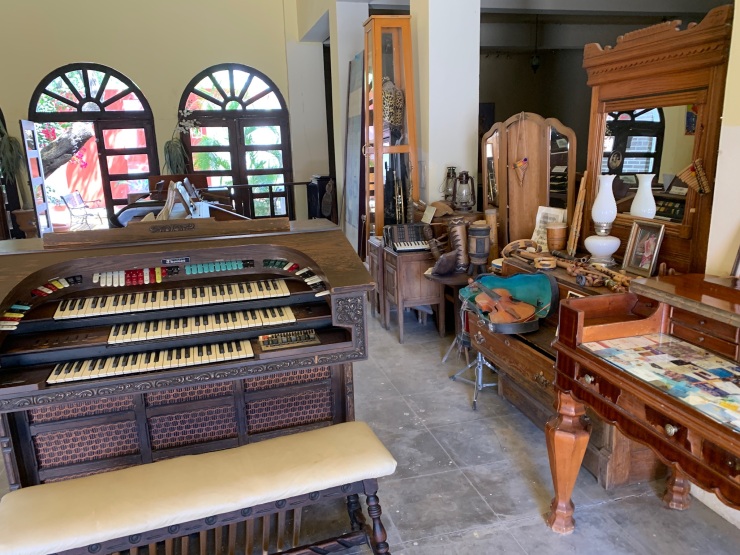
The Museum at a glance
Todos Santos – a Desert Oasis on the West Cape
After the highway was paved in 1980 the town was noticed by hippies and they never left, now a bohemian lifestyle, a strong art scene and The Hotel California (NOT the inspiration of the Eagles song).
A Pueblo Magicó, Todos Santos is earthy and laid back with studios and galleries in its old brick and adobe buildings. Aging sidewalks with steps, is not handicap accessible. No resort – and an extraordinary culinary scene.
We were waved into a nondescript wine sho by Anastasia, the owner – if you were in the door before closing – all good! Several expats sharing several wine that they had purchased. “Come on in…have some of mine, try this one!”

Todos Renovated 
Todos – Old 
Todos Old
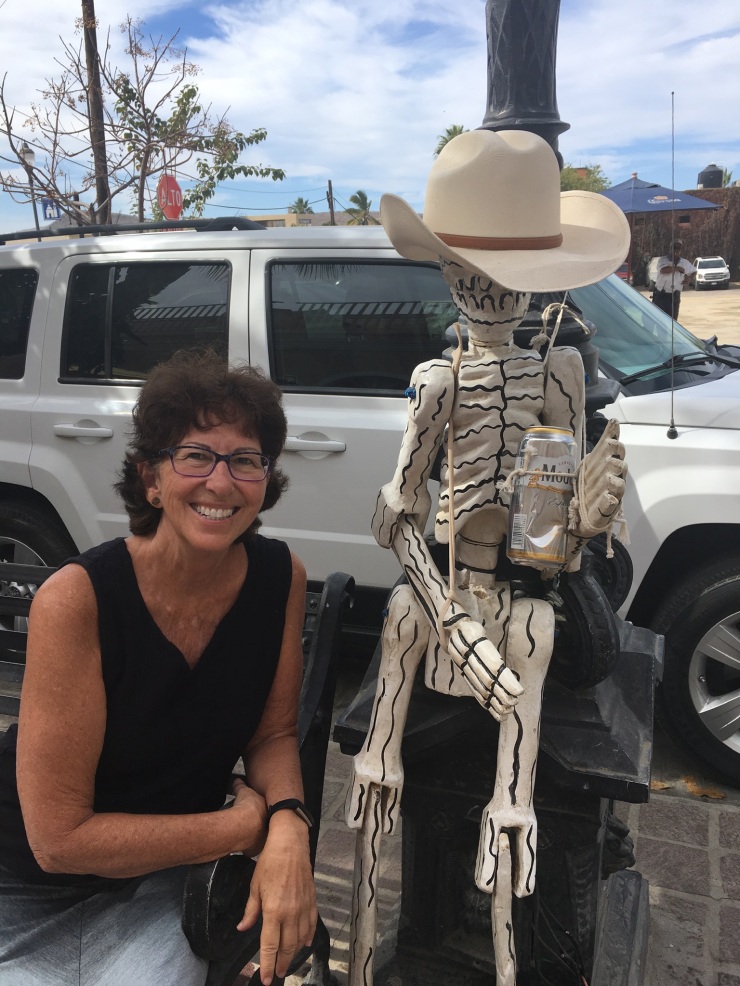

Shopping Bazaar 
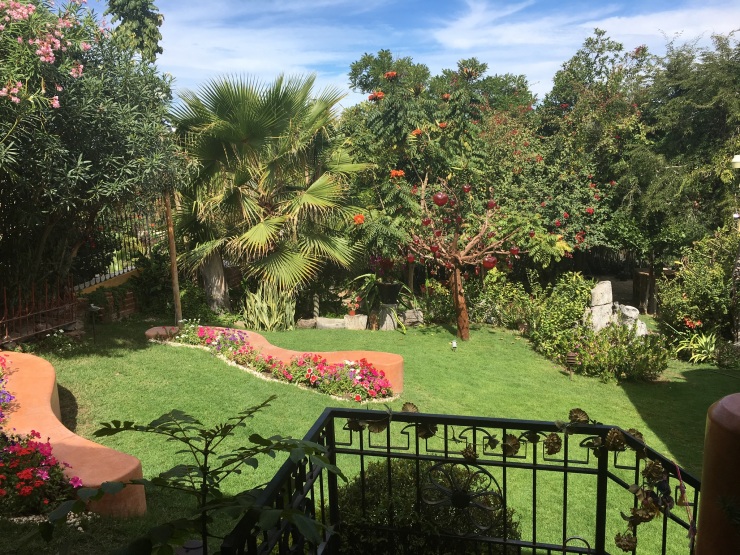
Hidden garden
Tortugeros Las Playitas is a non-profit sea turtle rescue center dedicated to restoring leatherbacks on the verge of extinction – there are only 2300 female leatherbacks in the world. They collects and incubates eggs after nesting, releasing hatchings to the sea.
West of town, off narrow one-lane dirt roads, are endless miles of the Pacific ocean coast.
El Pescadero
Once a remote fishing and agriculture village, El Pescadero’s expat development brings beach sprawl. Dozens of mostly gringo-owned houses of various size and value were scattered along dusty roads with many empty lots in between.
The town’s 4-lane highway is hazardous for people crossing to taco stands and small bars on both sides of the road. To convince drivers to slow down, cut-out cop cars are placed at the end of town.

Pescadoro traffic control 
Wine bottle monument at the Tropic of Cancer
The Cabos
At the peninsula’s southern tip, the region between San José del Cabo (international airport) and Cabo San Lucas (Spring Break parties) is completely different from all the rest of the peninsula. With big money here, yachts and cruise ships fill the marinas. Dance clubs and bars are busy.
Cabo San Lucas – Ciudad
The spring break capital of the west at the peninsula’s tip. The marina has upscale stores, beachside restaurants, souvenir shops, bars, tour operators, cruise ship passengers, etc.
El Arco rock (Land’s End Arch), accessible via water taxi, is the most photographed landmark in Baja. The Sea of Cortez and Pacific ocean converge and the rocks that extend out into the Pacific are magnificent.


Cabo San Lucas Marina

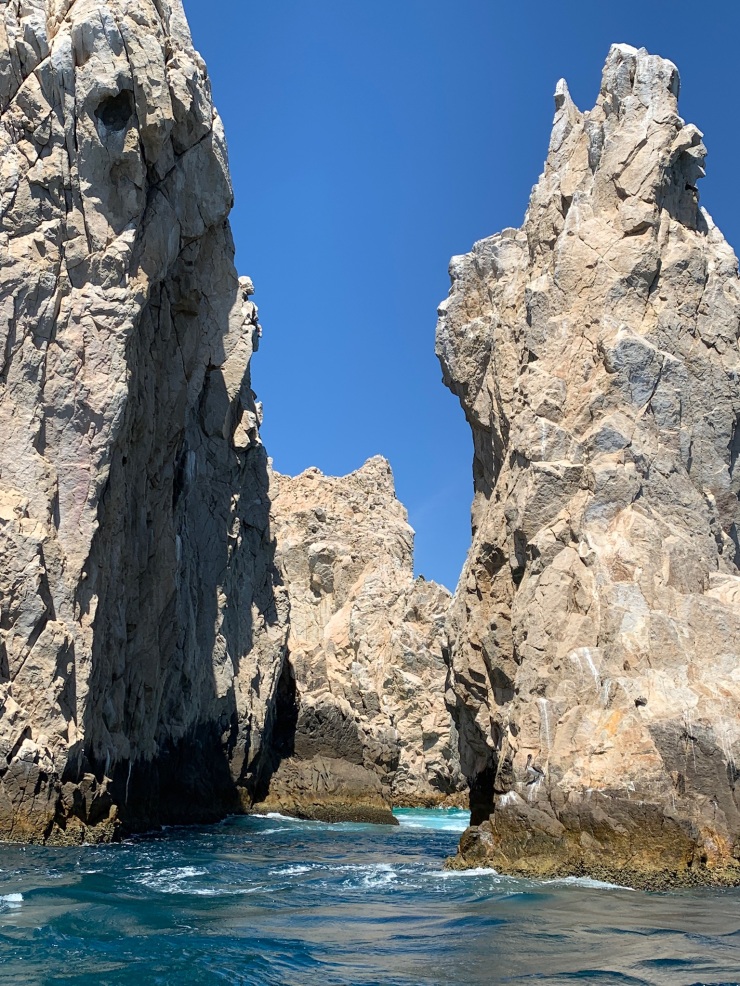

El Arco – Lands End
Our water taxi dropped two people at Lover’s Beach, a calm two-sided beach accessible only by boat, and then swung around to show us the backside which faces the Pacific Ocean, the water too rough for swimming (Divorce Beach).
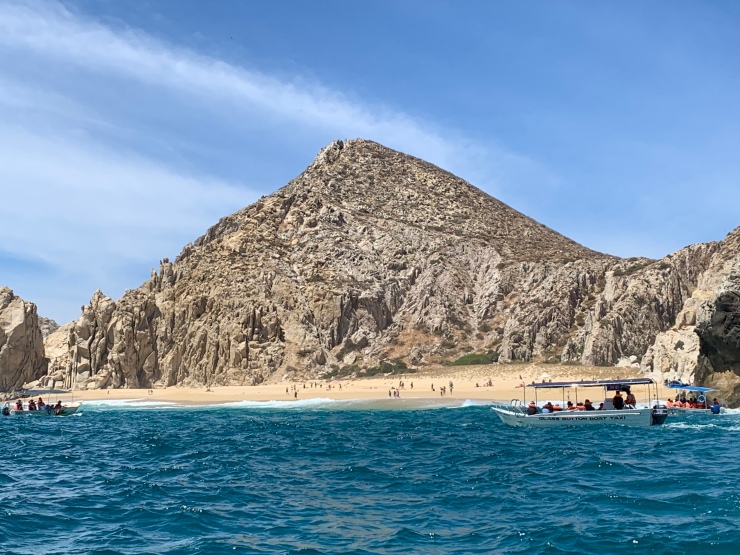
Lovers Beach (on the bay) 
Divorce Beach (on the Pacific)
San José del Cabo
The Cabo Corridor, a long string of exclusive resorts on the most beautiful beaches. San Jose’s traditional historic center, Plaza Teniente José Antonio Mijares, is low key and many of the historic buildings are art studios and galleries. The area retains authenticity. José del Cabo is a pretty town.
Ciudad de La Paz
La Paz is the capital of Baja Sur. We stayed here 2 1/2 months.
See Related Posts – Click on links below
- On The Sea A trip to Isla Espiritu Santos
- Swimming with Giants – Whales and Whale Sharks!
- Adios Baja – North from La Paz
- To La Paz – Our Drive South
- Baja Photos – Baja Photo Gallery
Click to view MEXICO/Baja Posts
Enter your email address below to follow our blog. (No Ads – just stories.)
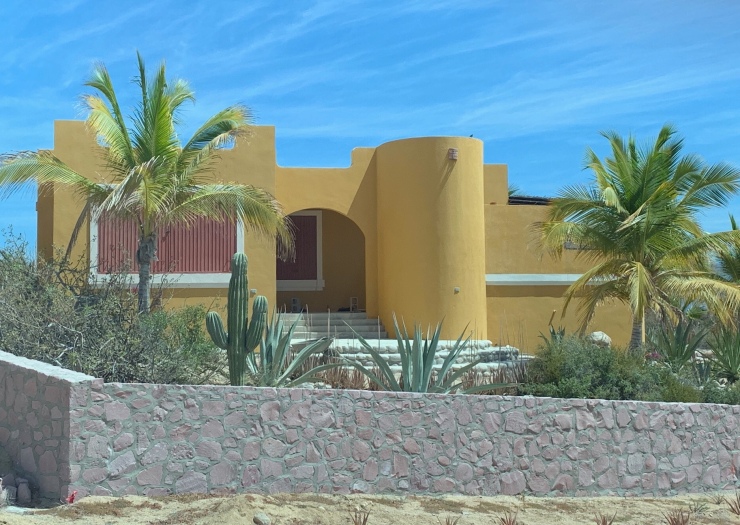






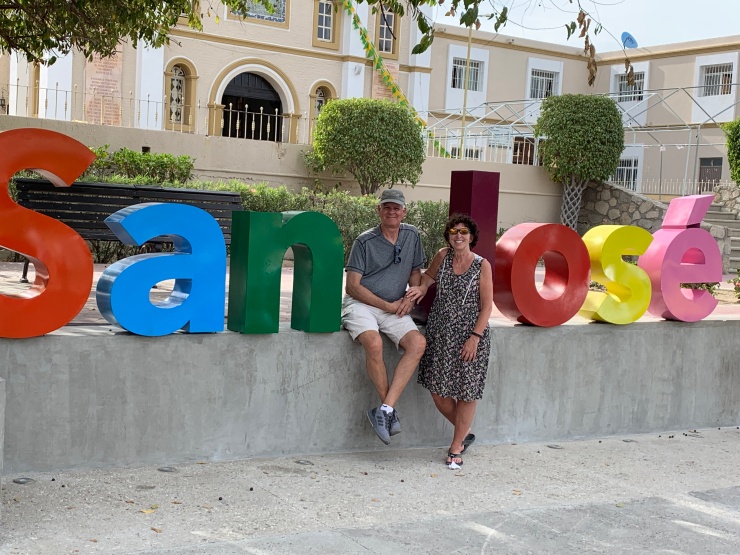



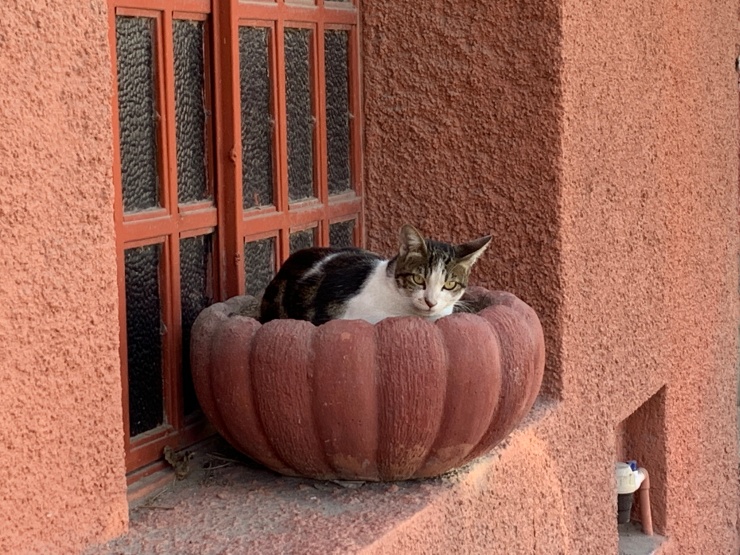

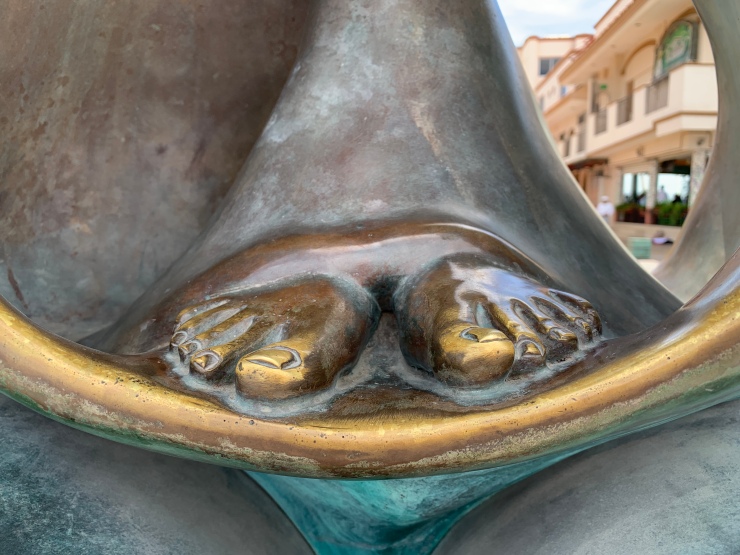






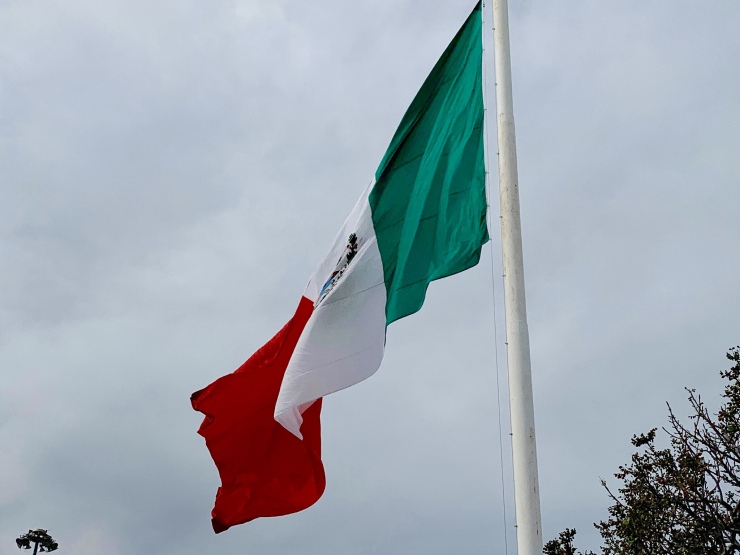
That is an intense wave!! Never would have crossed my mind to go to Baja…now I am intrigued!
We are on the lookout for our retirement home.
Same waves as in the Pacific off of the state of California…so fierce.
I love reading your stories about places off the beaten path. And superb photography!
Can’t believe we leave in two weeks! Sad to go. And you! Waiting to hear about Morocco.